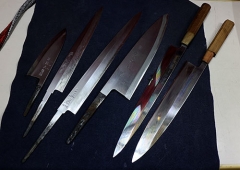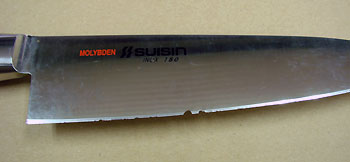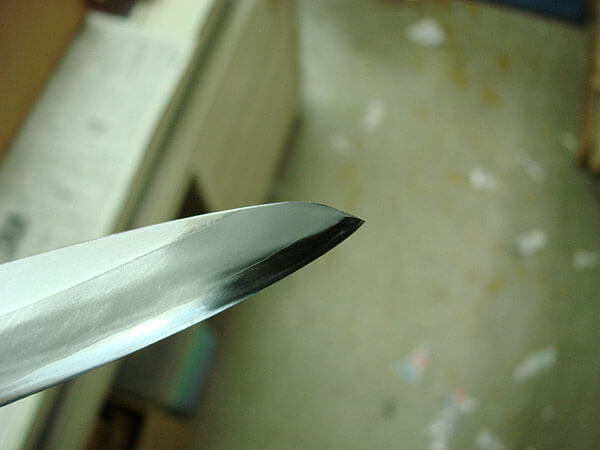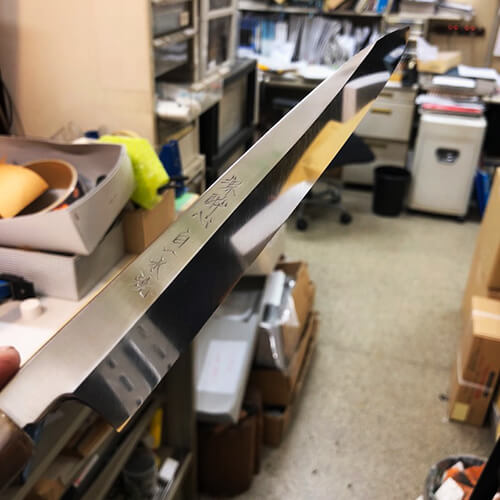White Steel #1 & White Steel #2

Today, I worked on a half Honbazuke for a kamagata usuba knife made from white steel #1 and white steel #2. It’s interesting to note that both the blacksmith who crafted these knives and the sharpener who honed the blades are the same. Now, you might be wondering, ‘Half Honbazuke? What’s that?’ Well, it’s a kind of leveling process using medium whetstones to selectively sharpen specific areas—a bit like landscaping for knives.
Once customers receive these knives, they have the option to either further refine the edge with finishing whetstones or go back to coarse stones to make the blade a bit thinner. Now, onto the crucial part—the sharpening process. Given that both knives are crafted by the same blacksmith, the primary difference lies in the performance of the steel itself. I was curious if I could notice any distinction while sharpening, but using Dia #500 and #1000, the difference wasn’t too pronounced. Although, I did sense that the white steel #2 might be a bit harder.
Perhaps the white steel #1 had a bit more resilience to it. Exciting to explore these nuances in the world of blades!
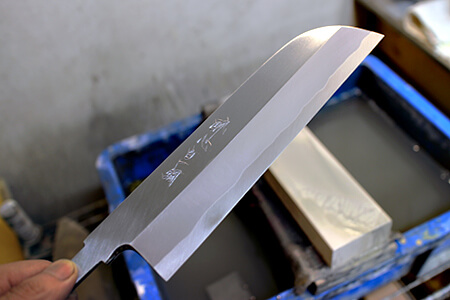
Caught a quick snapshot in the middle of sharpening with the medium whetstone today. It’s funny how, despite having the camera right next to me for blog photos, I manage to forget to click it more often than not.
This reminded me of something I heard from a different artisan in the past—apparently, they can achieve different levels of hardness in the order of white #3, white #2, and white #1 steel. There was a notion that white #1 steel might be kept a bit more moderate in hardness, as excessive hardness could risk cracking. On the other hand, white #3 steel, being quite resilient even when quenched in water, allows for a more aggressive hardening process. Keep in mind that these variations might be influenced by the skills of each blacksmith, so let’s just leave it at ‘Oh, that’s interesting!’ for now.
Now, about white #3 steel, there’s a saying that, with careful craftsmanship, it can produce the smoothest edge due to the carbon mixing process during its creation. But, you know, let’s take that with a grain of salt because, well, reading too much into it might lead to some interesting assumptions!
Going back to today’s task, I focused on sharpening the cutting edge only. Since these two knives were Honkasumi+, creating the cutting edge structure was a breeze. In fact, there was minimal correction needed, as the structure was already there from the start. No need to over-sharpen, and with the Honkasumi+ construction, there’s no risk of the edge breaking or changing shape. Even if you put in some extra effort during sharpening, you won’t encounter the common issue of ‘only the tip breaking’ that often occurs with thin blades.
For those grappling with the challenges of sharpening thin blades, I highly recommend giving Honkasumi+ a try! I’m confident it will be a game-changer for you.
hibishugyo
- 2014-07-17

